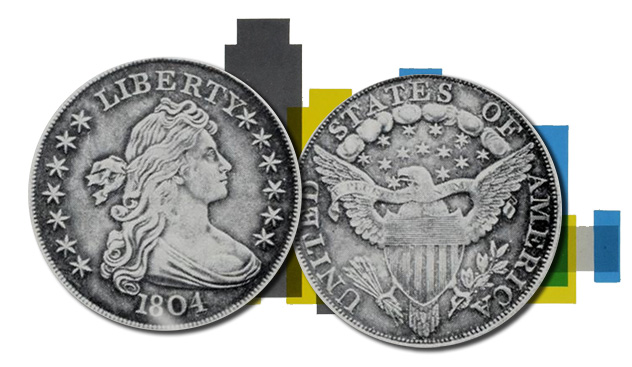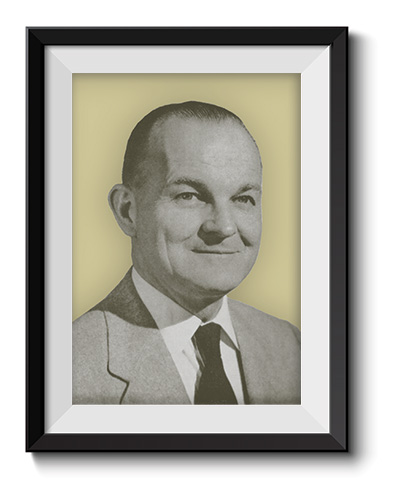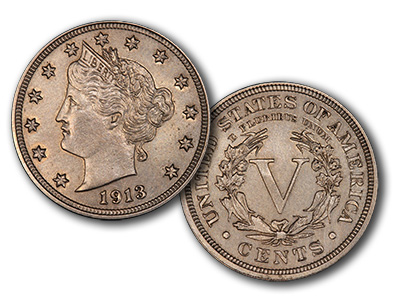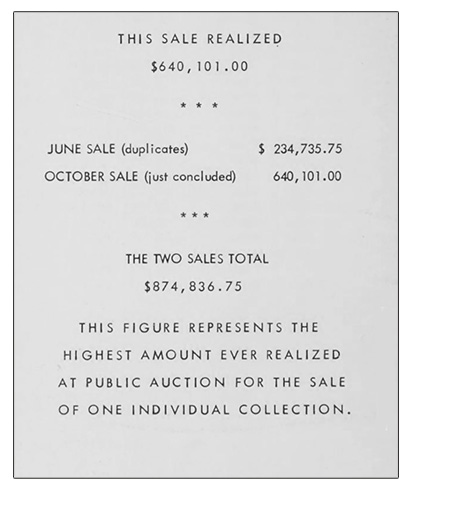
By Harvey Stack – Co-Founder, Stack’s Bowers Galleries ……
Links to earlier parts: 1 | 2 | 3 | 4 | 5 | 6 | 7 | 8 | 9 | 10
A Promising Year
After finishing the year 1962 with the success of the Samuel Wolfson Collection of gold coins, we had the feeling that 1963 would be even better.
It was around this time that Coin World joined Numismatic News as a weekly publication. Coin World made a major impression on the hobby, delivering more information and advertising than previously was available. The two weeklies became indispensable to the American collector.
Attendance at shows and conventions was growing. Specialists once again sought after the various rarities and varieties of the 18th, 19th and 20th centuries. Major collectors enhanced their collections. Competition for rare coins was getting keen, and price guides began to show this growth in interest.
There was, unfortunately, still the interference of import regulations on world gold coins so the available inventory on this side of the Atlantic was deterred. This meant, however, that dealers started to bid higher for gold coins of all series, foreign as well as those of the United States. The prices in the Wolfson sale in October 1962 confirmed this growth in value.
With economic changes occurring worldwide collectors and investors started to participate in more auction sales, visit more coin shops, attend more numismatic shows and conventions and spend more doing each of these things than they were willing to in earlier years.
Wolfson & Walton
Our first major public auction sale for 1963 was the offering of the Samuel Wolfson Collection of Silver and Copper Coins. This portion of the Wolfson collection was a comprehensive and quite complete date and mint mark collection from 1793 to 1962, featuring many great rarities.

We can talk about all the dates and mints that were part of the sale, but I feel that it’s better to discuss the story of one major rarity that he possessed as part of his vast and historic collection, which contained a major offering of Proof and Mint State coins and therefore attracted buyers in all series. The attendance was beyond belief; about 500 collectors and dealers were crammed into a huge ballroom, and several thousand bid sheets (and a record number of phone calls) help make the sale a super success.
The Wolfson Collection featured the R. Coulton Davis 1804 Silver Dollar, which we first offered at auction in 1954 where it was bought by a collector who resided in Fairbanks, Alaska for the then-huge sum for a rare silver coin of $8,000.
When the collector from Fairbanks completed his silver dollar collection with all dates and mints–including of course the 1804 and 1870-S silver dollars (to mention just two of the highlights)–he decided to sell it through a Stack’s public auction in early 1960. The R. Coulton Davis specimen sold to Wolfson that year for $28,000, a new record price.
When we offered the 1804 Dollar again in 1963 at the famous Wolfson sale it brought $36,000 – again, a record.

By June of 1963 we offered the first part of the duplicates (I guess I should say quanity lots and rarities) from the George Walton Collection.
The George Walton Collection was the largest holding of southern mint gold coins ever offered for sale, featuring both the private issues from the Bechtler Family and the gold coins of the Charlotte and Dahlonega Mints from 1838-1861. Not to mention numerous gold coins dated 1795 through 1932 that George also collected.
Many do not remember George Walton’s collection, but it was amassed during his travels mostly through the Mid-Atlantic states. George was an appraiser for banks and estates, and on his travels he met collectors, bank officers and private individuals with coins for sale not known to the general market.
George’s unfortunate automobile accident happened in 1962. He generally carried parts of his collection in his car in order to show clients or make dramatic displays at coin shows or conventions, and he often brought along the duplicates (which he had an unbelievable number of) to conduct coin business as he traveled about. The Stack family knew George personally, starting about 1937, as he visited New York about three or four times a year where bought and sold from Stack’s and other, smaller dealers.
I do not have the exact count but I know that George owned over 500 Bechtler Family gold coins in as many denominations and styles as he could assemble, plus a like number of Charlotte and Dahlonega coins. In addition, his collection contained a virtually complete collection of U.S. Mint gold coins. He also loved Pioneer and Territorial Gold,and here he had a vast and complete set of the coins of California, Oregon, Colorado and Utah.
It is interesting to note that he had special affection for Pioneer and Territorial $50 Gold “Slugs”, both Octagonal and Round. He rarely sold any of them, for he had a competitive spirit and loved to show a quantity at national coin shows. Which is a passion he shared with another famous collector, Amon Carter, Jr. I remember at one show in the 1950s both Walton and Carter each displayed most of their $50 gold pieces. I was there when each man set up and I was amazed by what they had on display AT ONE TIME.
Between Carter and Walton they showed 101 pieces.
It was liking seeing a Wells Fargo chest of yesteryear spilt over. Amon Carter had 50 coins on display, George Walton had 51. Carter said “I could have brought more!” Walton responded “I COULD HAVE BROUGHT MORE ALSO!” They both laughed and went to the bar to have a drink together.
Those were the days that Collectors carried lots of coins to a show, tried to complete with each other, were great friends and made collecting, trading, buying, selling, and learning from each other real fun!
Back now to George Walton. Thousands of coins were scattered all over the highway after the fatal crash. The police roped off the area, placing several guards along the highway while other officers search both the highway and the surrounding area for coins that belong to George. After several days of this everything that was found was turned over to the Walton Family.

Walton’s 1913 Liberty Head nickel–a great rarity of which only five were issued–was missing.
Another search followed and all that was found was a 1913 (altered date) Liberty Head nickel. Walton had planned to display the 1913 nickel at a show he was going to that night, but probably took the replica rather than show the original to the show–which, by the way, was found by the family at George’s home some 30 years later and was sold.
So as you see, every collection had a story to it, and that was what made great publicity and encouraged people to continue looking through change, and maybe turn them into collectors.
The first portion of the Walton sale took place in June 1963 and offered lower-grade examples from the collection. It contained 2,164 lots, including lots with multiple coins.
The second portion of the sale took place in October and contained an additional 3,400 lots, for a total of 5,564 lots between the two parts!
 This became one of the largest sales conducted during the decade. It had so many duplicates that, by sellling them at public auction, many collectors were able to get the coins they needed for their collections. We were even able to list and describe 27 different Bechtler Family designs and varieties. This was the first time Stack’s had numbered each described variety with “S” numbers, and the design differences were fully illustrated and listed in the Guidebook of the following year. To accomplish this, I worked with my cousin and business partner Norman Stack for a goodly number of evenings in order to provide a complete listing of all the Bechtler Family gold found in the Walton “hoard”. Collectors, especially ones who specialized in Southern Gold Coins, used the catalog to help them collect the series in depth.
This became one of the largest sales conducted during the decade. It had so many duplicates that, by sellling them at public auction, many collectors were able to get the coins they needed for their collections. We were even able to list and describe 27 different Bechtler Family designs and varieties. This was the first time Stack’s had numbered each described variety with “S” numbers, and the design differences were fully illustrated and listed in the Guidebook of the following year. To accomplish this, I worked with my cousin and business partner Norman Stack for a goodly number of evenings in order to provide a complete listing of all the Bechtler Family gold found in the Walton “hoard”. Collectors, especially ones who specialized in Southern Gold Coins, used the catalog to help them collect the series in depth.
In addition to U.S. coins of gold, silver and copper, Walton had an extensive collection of southern paper currency, from broken bank notes to federal issues, that he had bought from the same sources he got his coins from during his constant travels.
To give you several specific notes about the collection, we bought and then delivered Pioneer and Territorial coins to enhance the Josiah K. Lilly Collection, as well as the Conrad Bolt Collection, which we sold in 1966 as Dr. Bolt was able to complete what he was collecting from the Walton Sales, and decided to follow those who were also clients of Walton who were still building their collections.
With the sale of these two major collections, the Wolfson and Walton sales of 1963–and the influx of major buyers–Stack’s had a major year of growth.
The biggest difficulty the numismatic hobby had that year was the constant pressure of attempts to enforce the new Gold Importing Act. We dealers, all of us, had to work harder searching the marketplace and private collections to keep our businesses afloat and supply collectors with new coins for their collections.
This pressure from the Treasury Department made the available coins more costly, and therefore prices for gold coins continued to rise.




